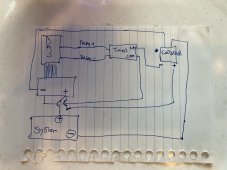Awesome build.
Will be starting to collect parts for my off grid system this fall. After reading your thread I'm thinking I'd like to pretty much copy your system but with more panels.
After all the testing and now some use on your battery. Are you happy with the 2p16s configuration. Do you see problems for someone trying a 3p or 4p16s?
If I go that route I would pay for the matched cells from Amy. But from what I understand they only come in batches of 16.
Second point. Maybe I missed it. What is your max draw with your AC on full?
My camp faces strait east across a lake. So the sun will start coming in about 4am. Ends around 1. I'd like to install enough ac to have it cooled off before solar power dissapears. Quite a price and standby consumption jump to go to dual 10k
Will be starting to collect parts for my off grid system this fall. After reading your thread I'm thinking I'd like to pretty much copy your system but with more panels.
After all the testing and now some use on your battery. Are you happy with the 2p16s configuration. Do you see problems for someone trying a 3p or 4p16s?
If I go that route I would pay for the matched cells from Amy. But from what I understand they only come in batches of 16.
Second point. Maybe I missed it. What is your max draw with your AC on full?
My camp faces strait east across a lake. So the sun will start coming in about 4am. Ends around 1. I'd like to install enough ac to have it cooled off before solar power dissapears. Quite a price and standby consumption jump to go to dual 10k




